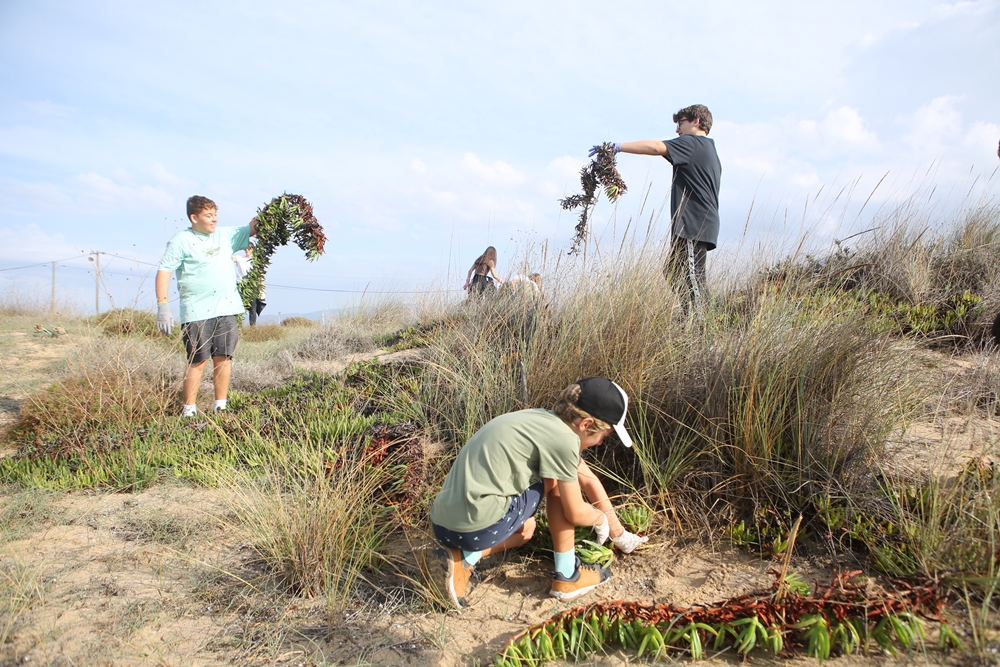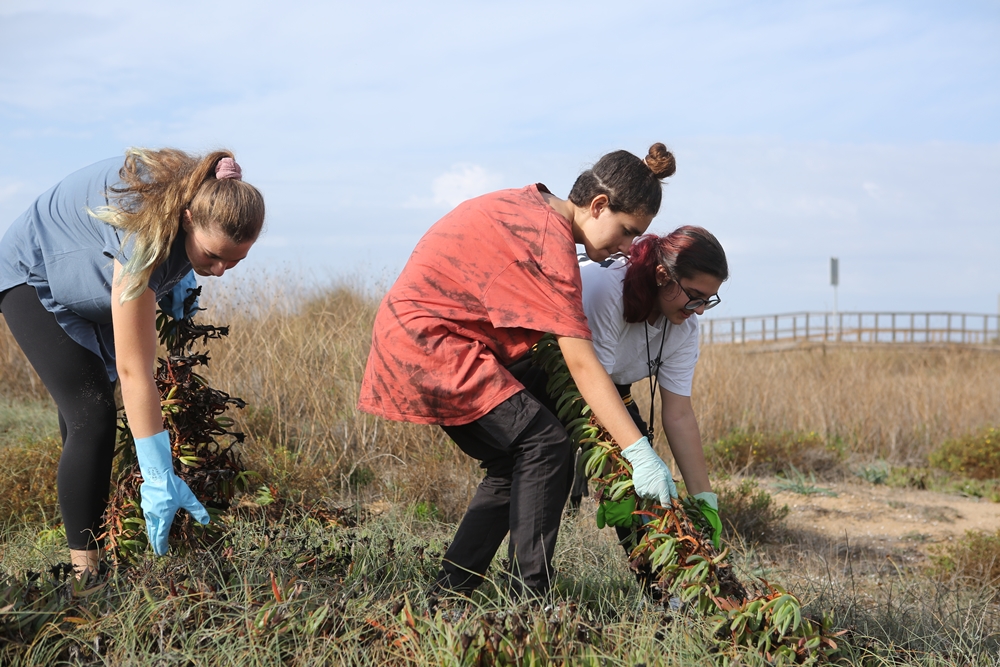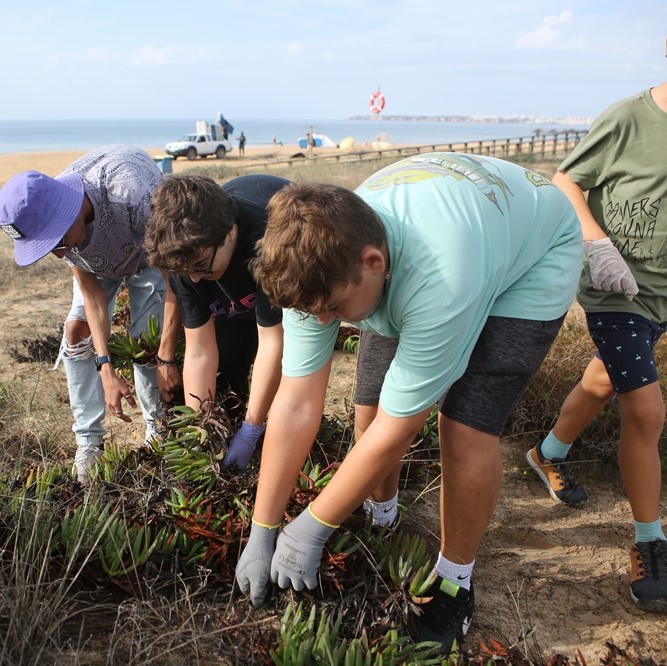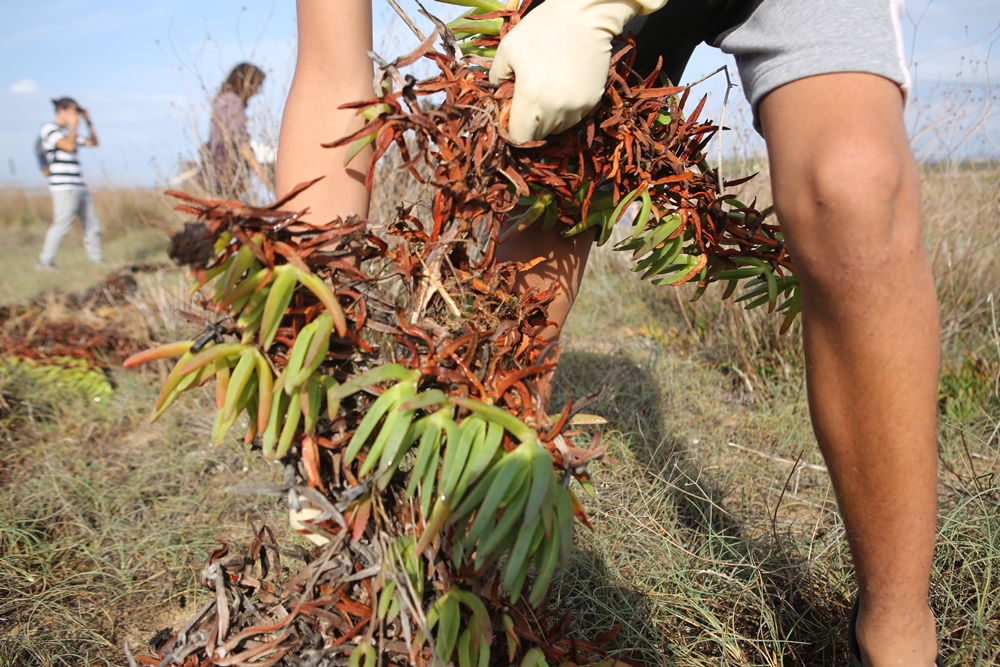150 students from the 8th grade classes of the Bemposta Schools Group (Portimão) participated, this Tuesday and Wednesday, October 11 and 12, in an action to remove the “crying from the beaches” (carpobrotus edulis) in the Ria de Alvor.
This action has been developed annually since 2017 by 8th grade classes of the Bemposta Schools Group, composed of the EBS Bemposta, EB23 D. João II (Alvor) and EB Francisco Sobral (Mexilhoeira Grande), and this year it is part of SEIVA – Education Week for Environmental Initiatives and Volunteering, promoted by the Portuguese Environment Agency – Algarve Hydrographic Region Administration.
The 150 students who participated in this removal action were made aware of the consequences of the presence of exotic species on native biological diversity, while promoting the functions and values present in wetlands.
After seven editions, the patches of 'chorão-das-praias' in the Alvor dune system, integrated in the Sítio Natura 2000, were practically removed. However, and due to the vegetative capacity and growth of the species, it will be necessary in the coming years to continue to monitor this space and begin removal in the neighboring areas.
The 'chorão-das-praias' is a non-indigenous (exotic) plant, originating in South Africa, which does not occur naturally in Portuguese territory, having been introduced in Portugal for ornamental purposes and later cultivated to fix slopes and dunes.
Its ability to propagate and vigorous vegetative growth facilitated the rapid colonization and occupation of vast areas, forming in some places continuous mats, which prevent the development and survival of native vegetation.
Therefore, and in accordance with Decree-Law nº 565/99, of 21 December, which regulates the introduction of non-indigenous species of flora and fauna, it is considered an invasive species, representing the second most important cause of loss of biodiversity. in natural habitats.






















Comments